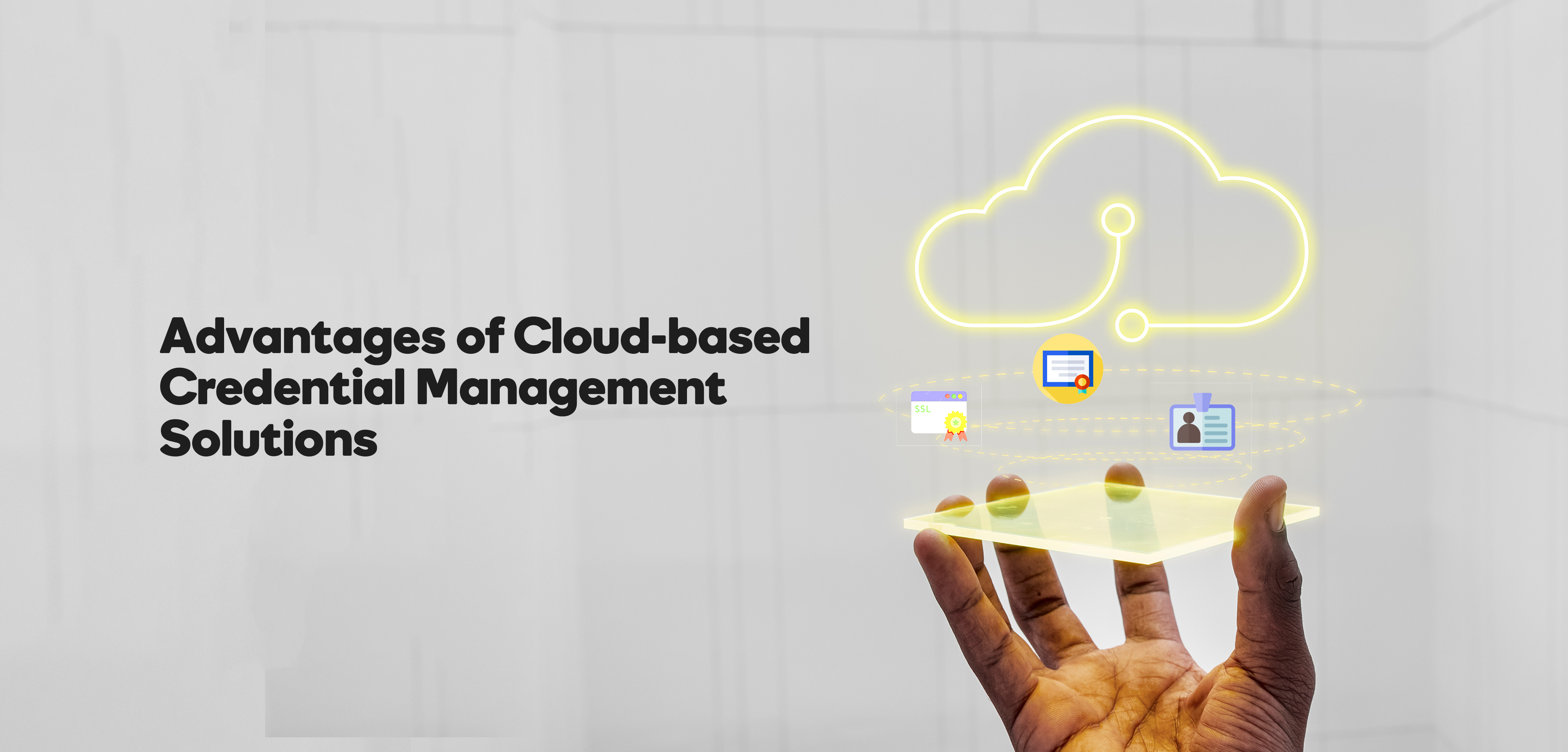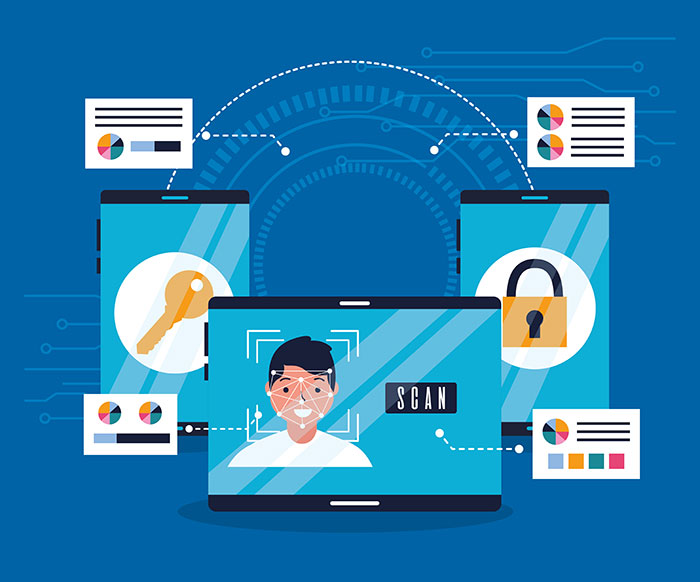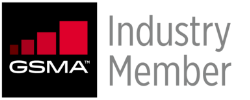The Role of Technology in Modern Construction Work
by Temidayo Afolabi

Imagine trying to build a skyscraper with only a hammer and nails. It would take forever and the end result would likely be less than perfect. Now imagine building that same skyscraper with the help of powerful tools and technology – cranes, excavators, and advanced design software. The process becomes much smoother, and more efficient, and the end result is a towering masterpiece.
The same can be said for the construction industry as a whole – technology has revolutionised the way we build, making the process faster, more accurate, and safer. In this article, we will delve into the role technology plays in modern construction work, highlighting examples of technologies that are transforming the industry.
The Role of Technology in Modern Construction
Digital Credentialing
One of the most significant technological advancements in construction is digital credentialing. This is the process of using electronic records to verify a worker’s qualifications and certifications. This technology allows for quick and easy verification of a worker’s credentials, which helps to ensure that only qualified workers are working on a construction site. With a technology like Seamfix Cred, workers can easily get their digital credentials stored in a secure place which is also sharable with any verifier in a single click.
3D Printing
Another technology that is commonly used in construction is 3D printing. This technology allows for the creation of complex and detailed models of buildings and structures, which can be used to plan and design projects. 3D printing also allows for the creation of building components, such as walls and roofing, which can be used in the construction process. This helps to reduce the amount of waste and improves the efficiency of the construction process.
Drones
Drones are used to survey construction sites and to inspect buildings and structures. They are also used to create detailed maps of construction sites, which can be used to plan and design projects. Drones are used to inspect structures, such as bridges and towers, which can be difficult to access manually. This helps to ensure the safety of workers and reduces the risk of accidents.
Virtual Reality
This technology allows for the creation of virtual models of buildings and structures, which can be used to plan and design projects. Virtual reality technology also allows for the creation of virtual walkthroughs of buildings and structures, which can be used to visualize the finished product beforehand. This technology helps to reduce the risk of errors and improves the efficiency of the construction process.
Building Information Modeling (BIM)
Another technology that is commonly used in construction is Building Information Modeling (BIM). It is a technology that allows for the creation of digital models of buildings and structures, which can be used to plan and design projects. BIM also allows for the creation of digital models of building systems, such as electrical and plumbing systems, which can be used to plan and design projects. This technology helps to reduce the risk of errors and improves the efficiency of the construction process.
In conclusion, technology plays a major role in modern construction work. From digital credentialing to 3D printing, drones, virtual reality and BIM, these technologies help to make construction work more efficient, accurate and safe. As a construction worker, it is important to stay up to date with the latest technologies, as they can help to improve your work and make your job easier. With technology continuing to advance, the future of construction work looks bright and exciting.
Related News
The Future of Occupational Health: Trends and Predictions for Service Providers
by Temidayo Afolabi

Over the years, occupational health (OH) has been one core sector that has ensured work has progressed as it should while every personnel maintains the required physical, mental, and social health and wellness status in the workplace. These exploits are not separable from some of the designated activities of the occupational health sector.
Meanwhile, almost everything you could think of is revolving, and so is OH. In the nearest future, some of the trends and predictions to turn the industry around positively are:
Remote Monitoring and Telemedicine
With advancements in technology, occupational health service providers (OHSPs) will increasingly use remote monitoring and telemedicine to provide care to employees. With the right technology, OHSPs can track employees whose health credentials are expiring and will soon require renewals.
Focus on Mental Health
Occupational health service providers will emphasise addressing mental health concerns among employees, as stress and burnout continue to be major issues. Beyond ailments or past health records that can affect employees physically at work, OHSPs will now focus on mental health records and how the recurrence can be avoided among employees.
Integration With AI and Machine Learning
Service providers will use artificial intelligence (AI) and machine learning to improve the efficiency and accuracy of their services, such as through predictive analytics and early warning systems; health hazards could be predicted, and every required measure will be put in place to abate or stop it.
Emphasis on Prevention and Wellness
Through programs such as health screenings, wellness initiatives, and ergonomic assessments, occupational health service providers will focus on preventing injuries and illnesses before they occur rather than just attending to them after they happen.
Greater Use of Wearable Technology
Wearable technology, such as fitness trackers and smartwatches, will be increasingly used to monitor employee health and provide real-time feedback on risk factors. This helps to avoid any time-taking process and deliver prompt results for proactive responses.
Increased Use of Virtual Reality
Virtual reality will be used to provide training, education, and even treatment for work-related conditions.
Greater Use of Data and Analytics
Big data has gained the main stage in recent times. Occupational health will not shy away from leveraging how data can be analysed to reveal patterns, trends, and associations, especially relating to human behaviour and interactions. Service providers will use data and analytics to gain insights into employee health and safety and identify and address workplace risks.
As an OHSP, how can you upgrade your service delivery with these trends?
- Remote monitoring and telemedicine with a solution like Seamfix Care can benefit occupational health providers by allowing them to reach more employees and provide care more efficiently while reducing the need for in-person visits.
- An emphasis on mental health can benefit providers by improving employee well-being, reducing absenteeism and presenteeism, and enhancing productivity.
- Integration with AI and machine learning can benefit providers by allowing them to more quickly and accurately identify potential health risks and improve their services’ efficiency.
- A focus on prevention and wellness can benefit providers by reducing the number of injuries and illnesses in the workplace, which can lower healthcare costs and improve employee productivity.
- Greater use of wearable technology can benefit providers by providing them with real-time data on employee health and fitness, which can help to identify potential risks and improve overall health outcomes.
- Increased use of virtual reality can benefit providers by providing training and education to employees and also allowing employees to recover from injuries more quickly.
- Greater use of data and analytics can benefit providers by giving them insights into employee health and safety and allowing them to identify and address risks in the workplace more effectively.
Related News
5 Tips for a Safe and Healthy Workplace: A Guide for Contractors
by Temidayo Afolabi

No doubt, employees are pumped up for the new work year, and many unfinished tasks and unattained goals from the previous year are about to be crushed with full force.
Since the spirit is high in every department, with everyone trying to catch up from where they left off, there is every likelihood that one of the least considered areas while planning for the new year is safety and wellness in the workplace.
As a contractor whose concern is to ensure you get the right hands on the job, and everyone executes their tasks while staying in their best shape physically and mentally, here are five quick tips to ensure the workplace is filled with a safe and healthy workforce all year round.
Encourage the use of face masks and other personal protective equipment (PPE).
Ever since the calm of the pandemic, a lot of people have relaxed on basic protective measures like the use of face masks. However, to maintain a healthy work environment, it is important to ensure employees have access to the appropriate PPE for their job duties and encourage them to use it consistently.
Regularly ensure clean and hazard-free work environment
While you are expected to comply with the requirement to only enrol employees who are physically and mentally fit for your project, it is also important to ensure the environment they will be working in and the facilities are kept clean and healthy as much as possible. This includes regularly disinfecting areas and surfaces like doorknobs, keyboards, and phones.
Encourage employees to stay home when they are feeling ill.
It’s not strange to see some employees keep their ailments to themselves when they know it will affect their productivity and, consequently, a compensation or promotion, but to ensure employees are sound and fit to deliver their job expectations, policies that encourage employees to take time off when they are sick without fear of retribution could be implemented.
Provide education and training on occupational health and hazards.
Educate workers on potential hazards in the workplace. It is important that every action taken to ensure employee well-being is clearly communicated so that employees understand the importance of adhering to safety protocols, such as wearing protective gear and face masks. In addition, first aid resources should be readily available, and employees should be trained in basic first aid techniques in case of accidents or emergencies. Most importantly, ensure employees know who to contact in an emergency or if they have concerns about their health and safety.
Encourage employees to take breaks and practice self-care.
Work hand-in-hand with Occupational Health Service Providers to provide your employees with resources and tools to support self-care, such as access to a gym or meditation room, or make it easy for them to take short breaks during the day. These can help prevent burnout and improve overall well-being.
These strategies can help create a culture that values self-care and promotes the well-being of your employees, meanwhile, every employee is unique and should be treated differently; and at the end, overseeing a safe and healthy workforce is a plus to your organisation and a haven of bright minds who can deliver optimally without restrictions. Prioritise employee health and well-being.
Related News
How to Get Employed Easily as a Worker in 2023
by Temidayo Afolabi

2022 might have been a great year for you, you probably got to work on your best projects ever and smiled home with significant pay, but everyone wants “better,” and even “best.” How can you go bigger in 2023?
Getting the attention of contractors as a worker can be challenging, but with the right strategies and approach, you can increase your chances of being discoverable and preferred. Here are some tips to help you get employed easily and boost your experience in 2023:
Build a strong reputation
As a worker, your reputation is everything. It is important to have significant precedence that can be leveraged from your previous appointments. Get known for delivering high-quality work to build a strong reputation in your industry. This will make it easier for potential clients to trust you and choose you for their projects.
Market yourself
Apart from the application you are preparing, marketing yourself is essential for attracting new contractors and winning more contracts. Use social media and online platforms to showcase your work and reach a wider audience; your next employer may be on your timeline.
Follow up with your previous contractors
After completing a part-time project, follow up with your past employers to ask for feedback and see if they have any additional work you could do. This not only helps to build a good working relationship but also increases the chances of getting repeat business.
Collaborate with other professionals
Collaborating with other professionals in your field with complementary skill sets can be a great way to expand your client base and get called on to new projects. Look for opportunities to partner with other companies or individuals and offer joint services to potential contractors.
Stay up to date with industry trends
Keeping up with industry trends and staying current with the latest techniques and technologies can give you an edge over other workers who are eyeing the same spot as you on a project and make you more attractive to contractors. Consider taking courses or attending workshops to stay informed and increase your expertise.
Provide excellent customer service
Providing excellent customer service is crucial for building a strong reputation and winning more contracts. Respond to inquiries promptly, meet deadlines, and be open to communication to ensure that your clients are satisfied with your work.
Stay compliant with industry standards
Top contractors are very particular about how compliant their employees are with industry standards that guide their businesses. In the construction space, for instance, contractors know the repercussion of fielding a worker who has not been certified fit-for-task, hence may not consider such worker irrespective of how experienced or skilled they are.
Leverage the advantage of choosing an easy-to-use health credentialing solution like Seamfix Care to connect with your Occcupational Health Service Provider (OHSP) and get a verifiable credential ahead of your next contract in 2023.
By implementing these strategies and consistently delivering high-quality work, you can increase your chances of winning more contracts and growing your business as a worker. Remember to be persistent and always strive to improve your skills and services to stand out in your industry.
Goodluck!
Related News
What Can I do Better to Manage Workers on a Construction Site?
by Temidayo Afolabi

Managing workers on a construction site can be a challenging but essential task for ensuring the success and safety of any project. Especially when you have to make your workforce compliant with industry regulations and motivation to get the job done in the best way possible.
Generally, coping with the stress of handling heavy machines, the unavoidable noise that comes with it, and the need to multitask can be draining, both physically and mentally, but rather than create the best work atmosphere for workers; most contractors make some common mistakes while managing them. Imagine having the best hands to work on your project but still hitting a rock because you couldn’t do enough as a contractor.
Some of the common mistakes most contractors make are:
- Failing to provide clear instructions and expectations for workers
- Poor communication of changes or updates to the project plan
- Not enforcing safety regulations and protocols
- Not providing adequate training and support for workers
- Not regularly checking in with workers to address any concerns or issues
- Not addressing conflicts or disagreements among workers in a timely and effective manner
- Not recognizing and rewarding hard work and contributions from workers
- Not providing adequate resources and equipment for workers to do their job effectively
- Not addressing performance issues or underperformance from workers promptly and effectively
- Not maintaining an organized and efficient work site to minimize disruptions and delays.
How can you stay at your best to ensure you avoid these mistakes and everyone acts out their part until the project is executed successfully?
Here are some tips for effectively managing a team of workers on a construction site:
- Develop a clear plan and set of goals for the project. This should include a timeline, budget, and list of tasks to be completed. Communicate this plan to the workers and ensure they understand their roles and responsibilities.
- Establish clear lines of communication and regularly check in with workers to ensure they are on track and have the resources they need to complete their tasks.
- Monitor the work to ensure that it is done safely and in accordance with relevant regulations and guidelines. This may involve conducting regular safety inspections and addressing any potential hazards.
- Provide workers with the necessary tools, equipment, and materials to complete their tasks. This may include safety gear, power tools, and construction materials.
- Address any issues or concerns that arise in a timely and professional manner. This may involve resolving conflicts, addressing performance issues, or providing additional training or support.
- Maintain accurate work records, including progress reports, time sheets, and expenses. This will help you track the project’s progress and identify any potential challenges or issues.
Overall, effective management of workers on a construction site requires clear communication, regular monitoring and support, and a focus on safety and efficiency. By following these tips, you can help ensure your project’s success and your workers’ well-being.
Related News
How Digital Credentials Build Trust and Increase Businesses’ Productivity
by Temidayo Afolabi
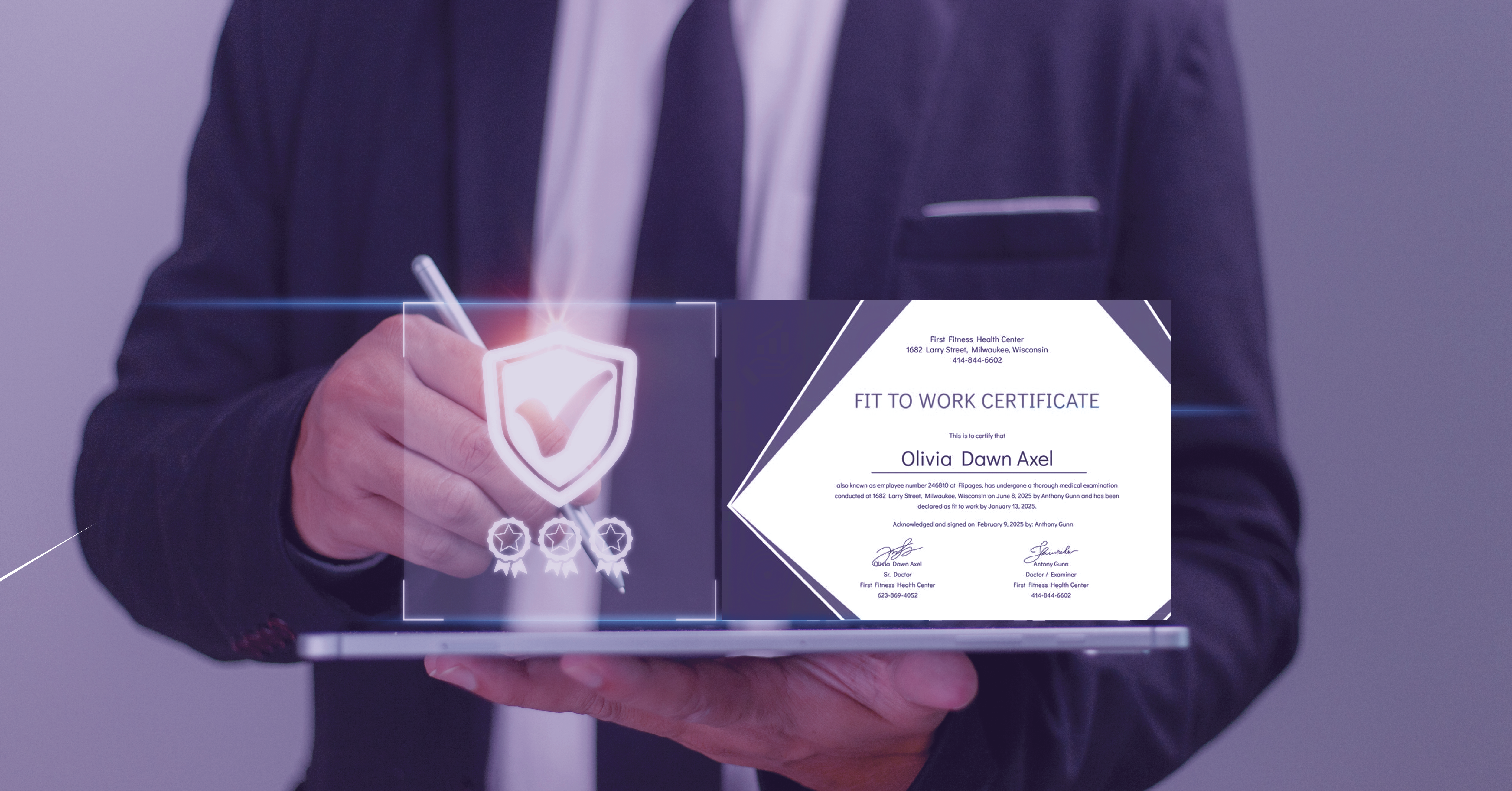
Imagine how assured everyone would be if only we could verify the identity of any unknown caller before we pick up a call or if we could determine how competent a person is by just seeing genuine and verifiable proof of competence tied to them.
Digital credentials have become a vital part of the online world, and for a good reason. They are an effective way of building trust in any industry as they provide a secure way of verifying the identity of an individual or an organization before we decide to foster our relationship or proceed with serious business with them.
But what exactly are digital credentials, and how do they work? Essentially, they are electronic documents with embedded data used to verify the identity, qualifications, and achievements of a person or entity they are tied to.
Examples of digital credentials include:
Digital certificates
These are electronic versions of certificates or diplomas that verify an individual’s education, health status, training, or professional qualifications.
Digital badges
These are electronic icons that represent a specific achievement or accomplishment. Digital badges can be earned through online courses, professional development programs, or other learning opportunities.
Digital ID cards
These are electronic versions of identification cards, such as driver’s licenses, passport cards, or employee ID cards. They can be used to verify an individual’s identity and access to certain resources.
Digital signatures
These are electronic versions of handwritten signatures used to authenticate documents or transactions. Digital signatures can be used to sign contracts, forms, or other legal documents.
Examples of industries that can benefit from digital credentialing
Occupational health
Digital credentials are used in the occupational health industry to verify the identity, qualifications, and health status of occupational workers. For example, a contractor may use a digital credential system to verify that a crane operator has no previous health challenges or allergies that could be triggered while in the critical stages of any construction project.
Education
Digital credentials are also used in the education industry to verify the qualifications and achievements of students. In this case, a college or university may use a digital credential system to issue and verify official transcripts, certificates, and degrees.
Financial Services
Digital credentials are used in the financial industry to verify the identity and qualifications of financial professionals. A bank may use a digital credential system to verify that an employee has the necessary licenses and certifications to work in the financial industry.
Government
Digital credentials are also used in government agencies to verify the identity and qualifications of government employees. A security-conscious government agency may use a digital credential system to verify that an employee has the necessary clearance to access sensitive information like international financial transaction details and other classified details.
Manufacturing
Digital credentials are used in the manufacturing industry to verify the qualifications and certifications of employees and contractors. For example, a manufacturing company may use a digital credential system to verify that a contractor has the necessary certifications and qualifications to work on a specific project.
How digital credentials can build trust and benefit any business
Digital credentials can be used to establish trust and credibility in any industry. For example, if you are a business owner looking to establish trust with your customers, you can use digital credentials to prove your identity and authenticity. This can help build trust and credibility with your customers, leading to increased sales and customer loyalty.
In conclusion, Seamfix is a technology brand that provides innovative solutions for the digital world. Our product, Seamfix Care, is a digital credentialing platform that allows individuals and organisations to create and manage their own digital credentials easily. Using Seamfix Care, users can streamline the process of verifying and sharing their qualifications and experiences, saving time and resources while increasing security and accuracy. Overall, Seamfix remains a valuable brand for anyone looking to take control of their digital identity and stay ahead in today’s digital landscape.
Related News
Infographic: The Best Ways to Carry out Health Surveillance
by Temidayo Afolabi
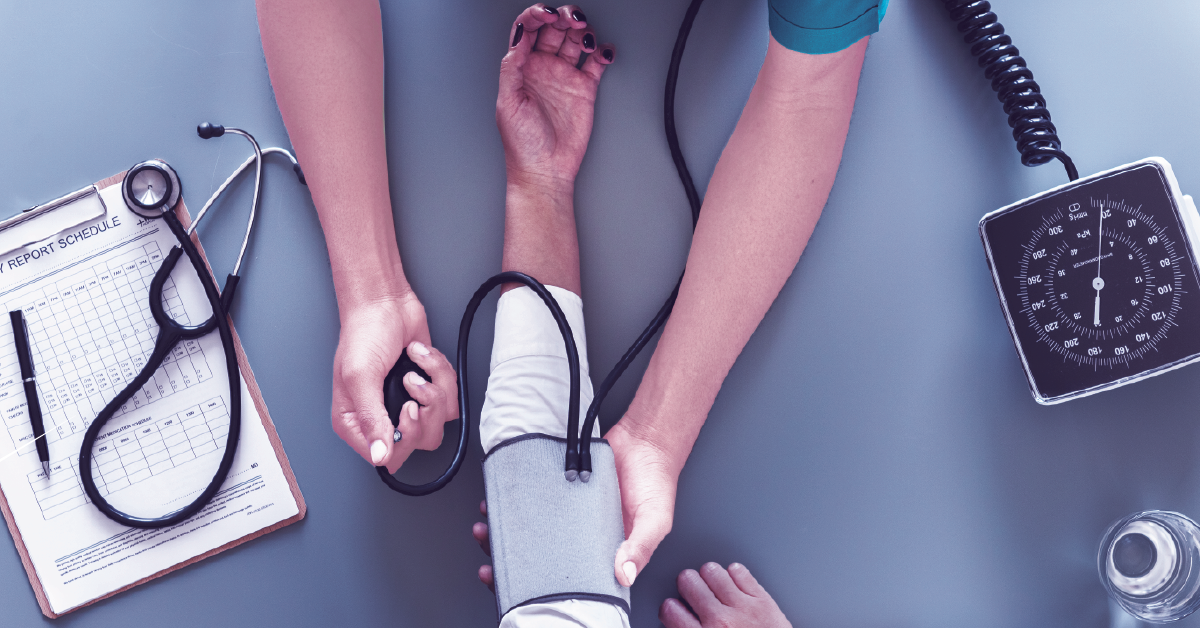
What is health surveillance?
Health surveillance is basically all the activities involved in ensuring a worker is in perfect health condition and is well protected against any form of health risk at the workplace.
It involves gathering medical information about a worker, running an assessment of the data collated to determine if there are underlying health challenges that could affect them negatively, and making sure their environment is well packaged to help curtail any health hazard while working.
Besides the fact that health surveillance is mandated by law, its importance cannot be overemphasized for people working in conditions of high noise, dust, vibration, exposed solvents, radiation and gaseous fumes.
Why is health surveillance so important?
Because the health and well-being of employees is at stake, health surveillance is automatically considered a priority. But why should health surveillance be a priority?
Early detection of likely health hazard
Conducting timely health surveillance can go a long way in uncovering medical conditions waiting to strike. Early detection can help with taking counteractive measures before these health mishaps get complicated.
Provision of data for evaluating health risk
Employers can bank on the results of accurate health surveillance to determine how much health risk their potential employee could bring to their organisation before employment, and prompt actions could be taken to help them get rid of the detected conditions and be in the best shape for their new role.
Enabling employees to raise concerns about how work affects their health
A great work environment where health surveillance is routine could give employees the freedom to voice out personal health concerns that may affect their productivity at work.
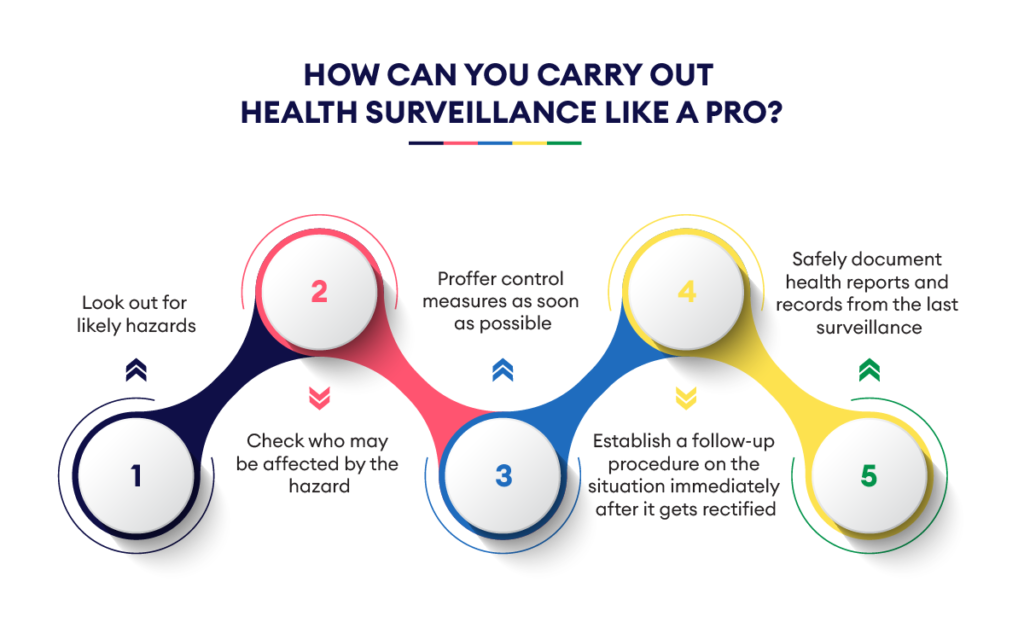
While a part of the responsibility rests on the employer, OHSPs are the missing pieces when it comes to helping organisations produce employees who are fit, free from workplace health risks, and in perfect health to execute their roles.
Related News
3 Ways To Choose The Best Platform For Fit-For-Task Credentialing
by Temidayo Afolabi

In any work context where fit-for-task credentials are a key requirement, three entities remain constant; the credential issuer, verifier, and owner.
You’re probably reading this because you fall into one of these buckets and you’re trying to choose the best platform for fit-for-task credentialing that matches your needs. If you’re migrating from another platform or trying out a credentialling platform to generate fit-for-work certificates for the first time, this article is just for you.
Here are three quick tips to consider before choosing a credentialing platform.
Core Features
Most digital credentialing platforms deliver on issuing and managing credentials, but there are specific features that differentiate some from others. Features like the technology that the platform is built on; most contemporary digital credentialing platforms run on blockchain technology because of its versatility and transparency. A digital credentialing platform that ties the issuer, verifier, and credential owner together for easy interaction makes work easier and influences everyone’s efficiency.
Easy Navigation
Nothing could be more tiring than getting on a platform and needing extra support to navigate the platform. A great credentialing platform saves you a lot of stress by providing you with a smooth DIY user interface and memorable user experience. If it gets too difficult navigating the platform, then achieving output may even be more complex.
Data Security
A major reason people opt for digital credentials is the security it offers. With hard copy credentials, duplication or falsification of credentials is easy. A credential management platform that can be trusted must offer extra data security features to restrict access to only authorized entities in the credentialing cycle.
Seamfix Care is a one-stop solution that incorporates these and other competitive features to make life easy for credential issuers, verifiers and owners through a quick and secure credential management platform.
Now that we’ve saved you some time on your decision-making process, you can see all of these features in action and how they are tailored to meet your needs by booking a Seamfix Care demo session here.
Related News
How To Manage Work-Related Stress As A Construction Worker
by Temidayo Afolabi
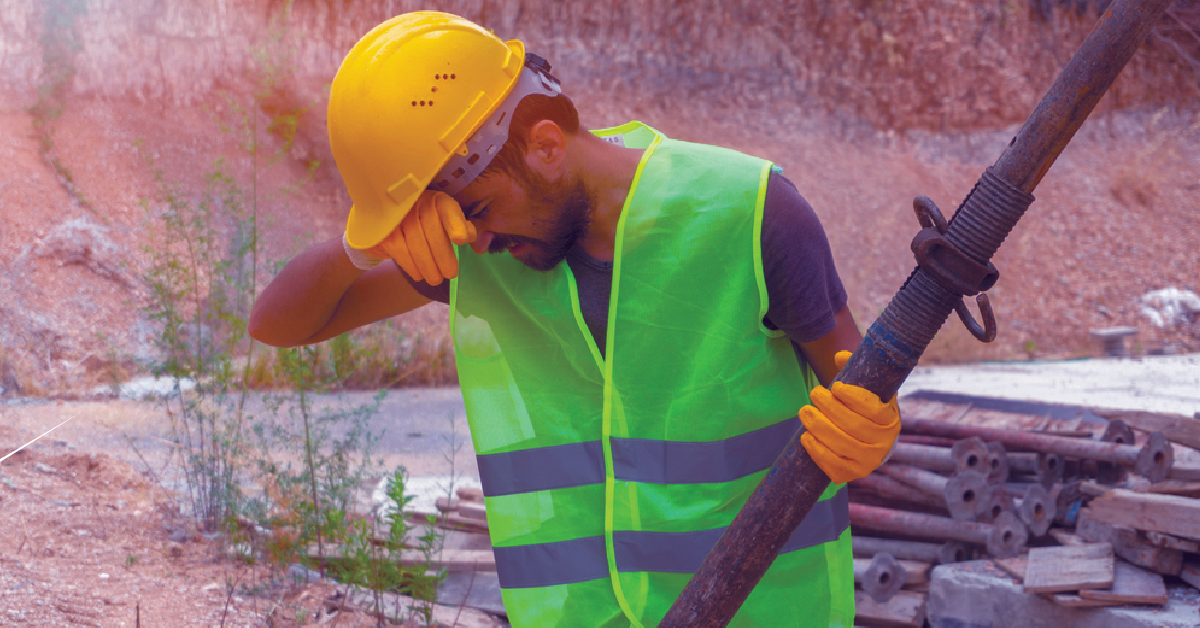
Life on a construction site is mostly hectic, with several events topping the to-do list each day. Lifting, climbing, pushing, pulling… it’s not just physical tasks. A significant percentage is also dedicated to brainstorming, calculating, and measuring to ensure accuracy at all times.
Have you ever been so tired after a round of fieldwork that even answering your phone became herculean?
If you don’t pay attention to how much energy you expend to be optimal at work, you may not realize how stressed you are until later when your body starts to slow down.
Before we delve into managing work-related stress, here are some of the sources of stress at work.
- Excessive Workload
- Difficult Teammates
- Unrealistic Deadlines
- Conflicting Demands
- Unclear Job Description
Aside from the listed causes of work stress, several other factors influence how easy or difficult a job could be for you. So how do you manage stress?
Take time to recharge
If you enjoy your work so much so that you don’t feel like taking breaks, you may reach your work goals sooner than later, but you might also wear yourself out. Recharging at work sometimes looks like taking short naps, deliberate distractions, and stealing out short breaks to be alone and meditate to strengthen your mind.
Be clear on requirements
Another thing that may stress you out at work is getting your work requirement all wrong or getting the wrong instructions; in most cases, you would have gone far with doing the wrong thing before you try to retrace your steps. Eventually, the mind is confused, and the body is tired already. Ensure to get the exact job descriptions, roles, and responsibilities before engaging in any work. If it would cost you more time to ask questions or brainstorm, it’s better than getting it all wrong first and trying to rectify things later.
Avoid multitasking
Many workers thrive on the ability to attend to multiple tasks at once, but in most cases, dedicating time to a particular task before jumping on to the next one brings more focused results. To avoid stretching your body and mind’s capacity, avoid or limit the rate at which you multitask.
Take walks away from the site at intervals
To ease up yourself while at work, take walks away from the site at intervals during your break to unwind or get soaked in things happening in a different environment than the site. When you return to work, you will return with a refreshed mind and be motivated to continue from where you’ve stopped.
Automate manual processes
In most cases, getting engaged in manual work may drain your energy and leave you repeating the same process daily with slow results. No doubt, repeating processes slows down productivity and affects your versatility; hence, adopting easy ways to automate some of your everyday work processes with a technology like Seamfix Care could revitalise you for hitting the next work target.
A healthy mind and body does the job, actually. And since no one can motivate you as you would do yourself, therefore, you have to decide to be at your best and stay active without any mental or physical bothers while at work.
Related News
3 Things The Occupational Health Industry Must Start Doing Differently
by Temidayo Afolabi
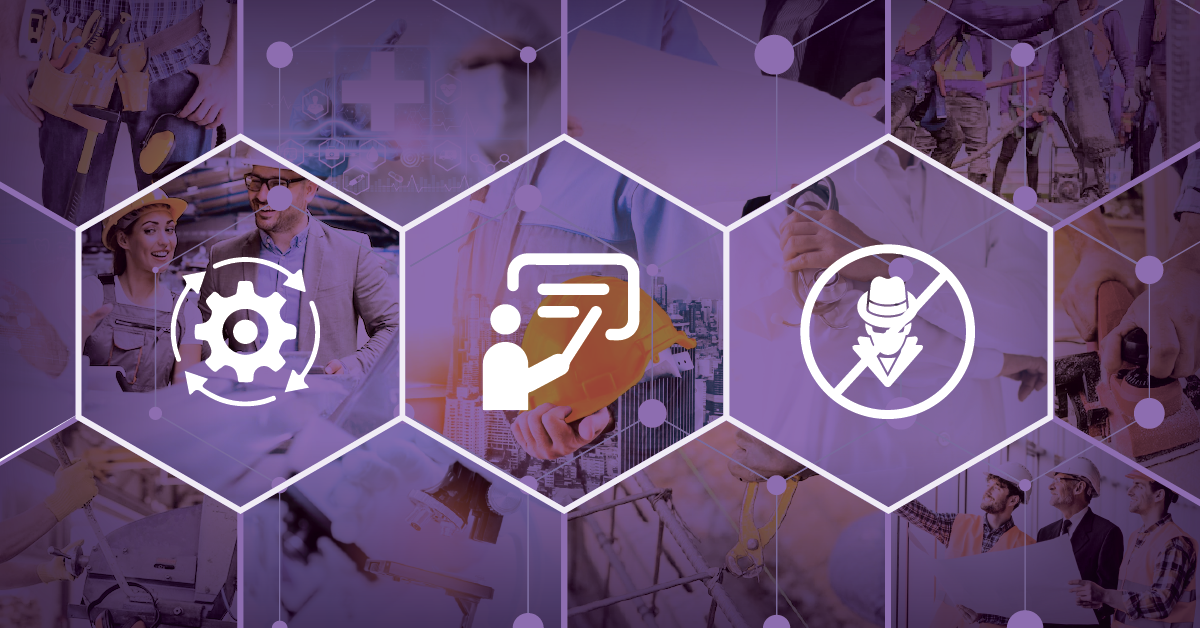
The saying, “better the devil you know, than the devil you don’t”, which means it’s better to stick with the old way of doing things than attempt new ways, is not entirely true. This article says, “it is false!”
A lot of things may stay the same, but change is constant.
Ever since we went on a trip and back with the pandemic, several things have not remained the same; several organisations have had a renewed focus on their modes of operations, while some are still stuck in the web of doing things the old way.
The occupational health industry is one such sector that hasn’t changed its mode of operations regardless of the glaring need. We compiled a list of three major processes that should experience instant change for better output.
Process Automation
You can work smarter by changing the way you see and do things. Nearly every industry has found a place for technology’s assistance, and occupational health should not be left out.
Most people end up working overtime due to time spent on repetitive manual processes. Adopting solutions like Seamix Care could save you the blush when it comes to managing your clients’ health credentials and securing critical documentation.
New Training Methods
The occupational health industry conveniently organised and conducted physical training sessions for involved personnel before the pandemic. However, a better opportunity emerged during the pandemic; hosting training virtually, and issuing credentials digitally, whilst ensuring compliance with industry regulations.
While some organizations have switched to virtually training their employees, others still lag far behind, questioning just how productively virtual knowledge can be shared. Employees will be better prepared when they embrace virtual learning and other modern learning methods.
Getting Rid Of Fraudulent Activities
The issue of having unqualified employees feign their competence is still widely known in the industry. A lot of industrial sites are still buzzing with negligent employees who seek greener pastures but aren’t qualified for the environment.
Imagine a construction worker with a terminal illness that provides a forged certificate to cover up his record; even before he gets caught, he may naturally meet his waterloo when he experiences seizures or any critical health emergency while handling heavy machinery or on a scaffold.
Apart from the harm caused to such negligent workers, the general public stays at risk, and the contractor may be fined for fielding such workers.
To avoid a case like this, attention must be paid to faster and more transparent ways of issuing genuine digital health certificates and a valid means of verifying the quality of each certificate presented during background checks.
Seamfix Care remains a change-oriented tool for the occupational health industry. Since its inception, it has been positioned to become the meeting point of people in the industry (credential issuer, credential owner, and credential verifier), with a focus on simplifying processes, ensuring overall compliance, and helping build trust and satisfaction in credential management.
Apart from these, its core functionality – IDQR (a means of identification that merges an individuals image with a unique QR code) allows contractors to detect original credentials from duplicated ones and avoid the pains of forfeiting their projects or parting ways with huge amounts of money to lawsuits.
In Bertolt Brecht’s words, “because things are the way they are, things will not stay the way they are.” Embrace change today and see the positive impact of technology in your business. Learn more about Seamfix Care here.
